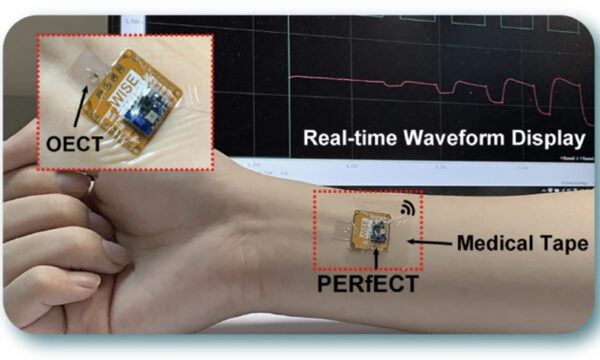Researchers from the University of Missouri’s College of Engineering have invented a soft, breathable, and stretchable material that is nearly undetectable on a person’s skin, for use in the development of wearable health monitoring devices.
The device would be able to track multiple vital signs in tandem, such as blood pressure, heart activity, and skin hydration, for early detection of chronic diseases and timely interventions.
Assistant Prof. Zheng Yan said that while other researchers have worked on similar designs, their material differed in its “skin-like” material that is made from a liquid-metal elastomer composite.
“It is ultrasoft and ultra-stretchable, so when the device is worn on the human body, it will be mechanically imperceptible to the user,” Yan said.
“You cannot feel it, and you will likely forget about it. This is because people can feel about 20 kilopascals or more pressure when something is stretched on their skin, and this material creates less pressure than that.”
Comparable Design
The University of Hong Kong has developed a similar, coin-sized wearable sensor to monitor blood sugar levels and other health conditions. However, at 1.5 x 1.5 x 0.2 centimetres, it is both larger and bulkier than the one Yan has developed, which is one by one centimetre.

Yan wrote in the study published in the American Association for the Advancement of Science Journal on Jan. 6, that the trackers will be reliable even during motion or underwater, as the “bioelectronics demonstrates excellent waterproofness and can perform high-quality recording even in water.”
He said that their material also had antibacterial and antiviral properties to prevent harmful pathogens from forming on the surface of the skin underneath the device.
“We call it a mechanical and electrical decoupling, so when the material is stretched, there is only a small change in the electrical performance during human motion, and the device can still record high-quality biological signals from the human body,” Yan said.
In the future, he hopes to be able to enable the development of devices that can wirelessly transmit biological data to smartphones or similar electronics for sharing with medical professionals.
“Our overall goal is to help improve the long-term biocompatibility and the long-lasting accuracy of wearable bioelectronics through the innovation of this fundamental porous material,” Yan said.








